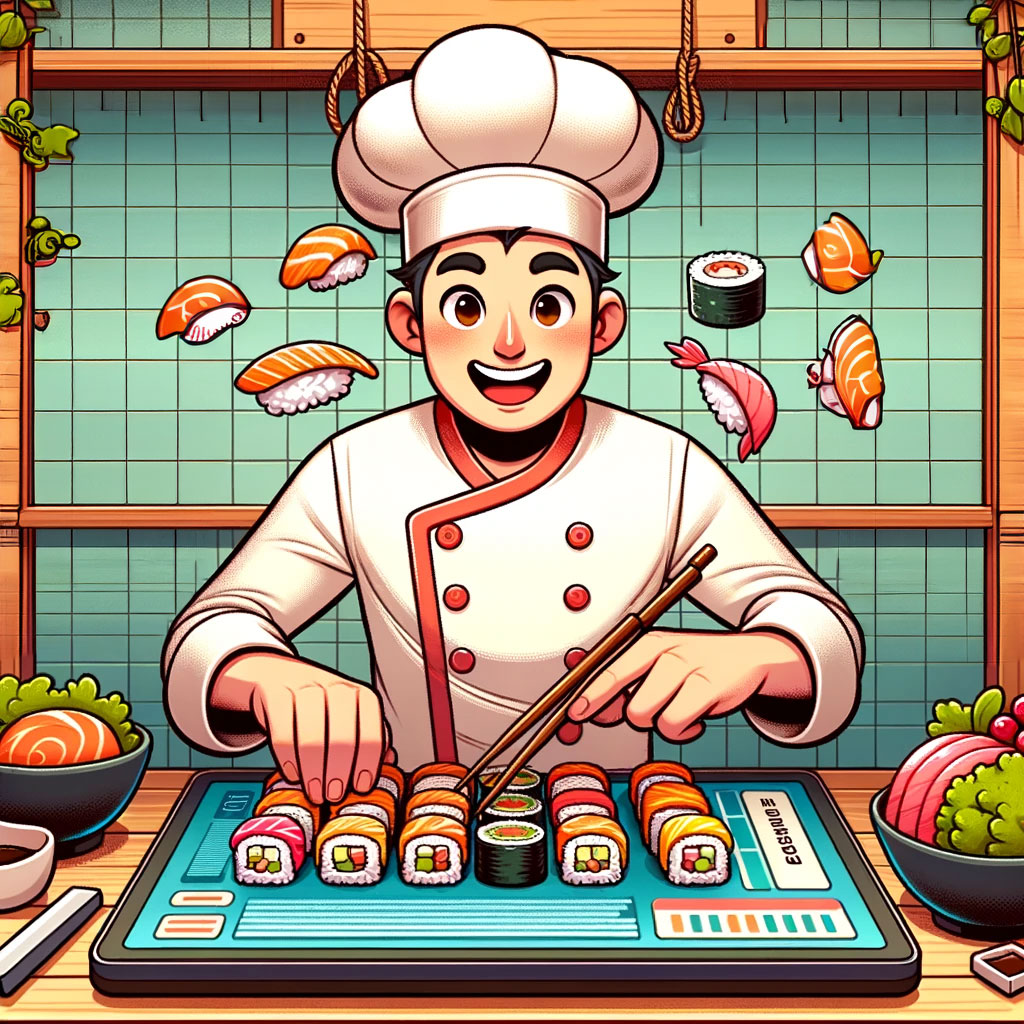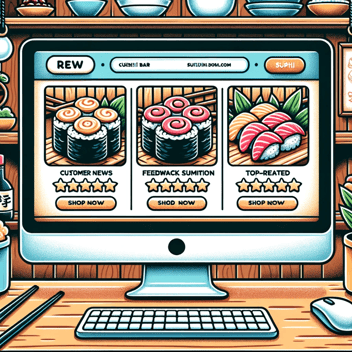
Sushi and Stories: Sharing the Journey of Your Sushi Chefs Through Blog Posts
This post may contain affiliate links, which means I may receive a commission if you click a link and purchase something that I have recommended. Thank you!
In the realm of culinary arts, sushi holds a revered place, embodying a rich tradition that marries meticulous craftsmanship with an aesthetic allure. Behind every perfectly rolled sushi lies the tale of a sushi chef, whose journey is as captivating as the dishes they conjure up. In a world where diners are increasingly seeking a connection with their food beyond the plate, sharing the stories of your sushi chefs through blog posts can add a new layer of engagement. Let's embark on a venture to explore how the journey of sushi chefs can be shared through evocative storytelling, forging a deeper bond with your audience.
The Cultural Significance of Sushi Chefs
The journey of a sushi chef is rooted in a rich cultural tapestry that dates back centuries. In Japan, becoming a sushi chef, or itamae, is not merely about mastering a profession, but a lifelong pursuit of perfection. The reverence accorded to sushi chefs in Japanese culture reflects the profound respect for mastery and tradition. By delving into the historical evolution and the cultural pedestal on which sushi chefs stand, we begin to appreciate the depth of their journey.
The Art Behind Sushi Making
Sushi is more than a dish; it's a visual and culinary art form. The dedication required to master sushi-making is akin to that of an artist honing their craft. The aesthetic aspect of sushi presentation, the harmony of colors, textures, and flavors, narrates a story of dedication and passion. Sharing snippets of this artistry through blog posts can offer a glimpse into the soulful journey of sushi chefs.
Personal Journey of Sushi Chefs
Every sushi chef has a unique tale to tell. The path to becoming a sushi chef often entails years of rigorous training, overcoming challenges, and a relentless pursuit of perfection. By narrating personal anecdotes, the highs and lows, the moments of triumph, and the lessons learned along the way, your blog can provide a window into the lives and hearts of the chefs behind the sushi bar.
Sharing the Journey Through Blog Posts
The stories of sushi chefs are a goldmine of engaging content. Blog posts that narrate these journeys humanize the chefs, forging a connection with the audience. It's about providing a behind-the-scenes look into the life and work of sushi chefs, making the dining experience more enriching. Through storytelling, you offer more than a meal; you serve up a narrative that resonates with the heart.
Storytelling in the Restaurant Industry
The restaurant landscape is evolving, with storytelling emerging as a potent tool to engage diners and teams alike. It's about crafting narratives that resonate, that make diners feel a part of something larger. By sharing the stories of sushi chefs, you not only honor their journey but also enrich the dining experience, creating a community of engaged and loyal patrons1.
Case Study: A Sushi Chef’s Leap of Faith
In a quaint Michelin Star restaurant in Tokyo, a sushi chef named Hiroshi took the culinary world by storm. His journey from a small town to the bustling heart of Tokyo epitomizes the essence of perseverance and mastery. Hiroshi’s tale, shared through a series of blog posts, garnered a loyal following, making the restaurant a hub for sushi aficionados. His story is a testament to the captivating power of real-life narratives1.
Crafting Engaging Blog Posts
Crafting a blog post that resonates requires a blend of authenticity, visuals, and a dash of creativity. Here are some tips:
- Personal Anecdotes: Share personal stories, milestones, and challenges faced by your sushi chefs.
- Visual Storytelling: Incorporate images and videos showcasing the chefs at work, creating a visual narrative.
- Interactive Content: Engage the audience with interactive content like Q&A sessions, live sushi-making demos, or chef interviews.
Benefits of Sharing Sushi Chef Stories
Sharing the journey of your sushi chefs can cultivate a community of engaged diners. Here are some benefits:
- Customer Loyalty: Personal stories forge a deeper connection, fostering customer loyalty.
- Enhanced Dining Experience: Knowing the chefs' stories enriches the dining experience.
- Positive Online Presence: Engaging stories can bolster your online presence, attracting more diners.
The Role of Social Media
Social media platforms are potent tools to amplify the reach of your blog posts. Here are some strategies:
- Cross-Promotion: Share blog posts across different social media platforms to reach a wider audience.
- Engagement: Encourage followers to share their own sushi experiences, creating a vibrant community of sushi lovers.
- Visual Content: Share snippets of video content from your blog posts to entice social media followers.
Serving Up a Feast for the Soul
Sharing the journey of your sushi chefs is about serving up a feast for the soul. It's about transcending the culinary boundaries and inviting diners on a narrative journey that satiates the soul as much as the palate. By narrating the stories of sushi chefs, restaurants can create a richer dining experience, where every bite tells a story.
FAQs
- What training does a sushi chef undergo?
- Sushi chefs undergo rigorous training, learning the art of sushi making, fish selection, and presentation skills.
- How can restaurants effectively share their sushi chefs' stories?
- Through blog posts, social media, and interactive content like interviews and live demos.
- Why is storytelling important in the restaurant industry?
- Storytelling creates a connection, enriches the dining experience, and fosters a community of loyal patrons.
- What are some popular blogs that share sushi chef stories?
- There are numerous food blogs and restaurant blogs that share sushi chef stories, offering a glimpse into the culinary world of sushi.


